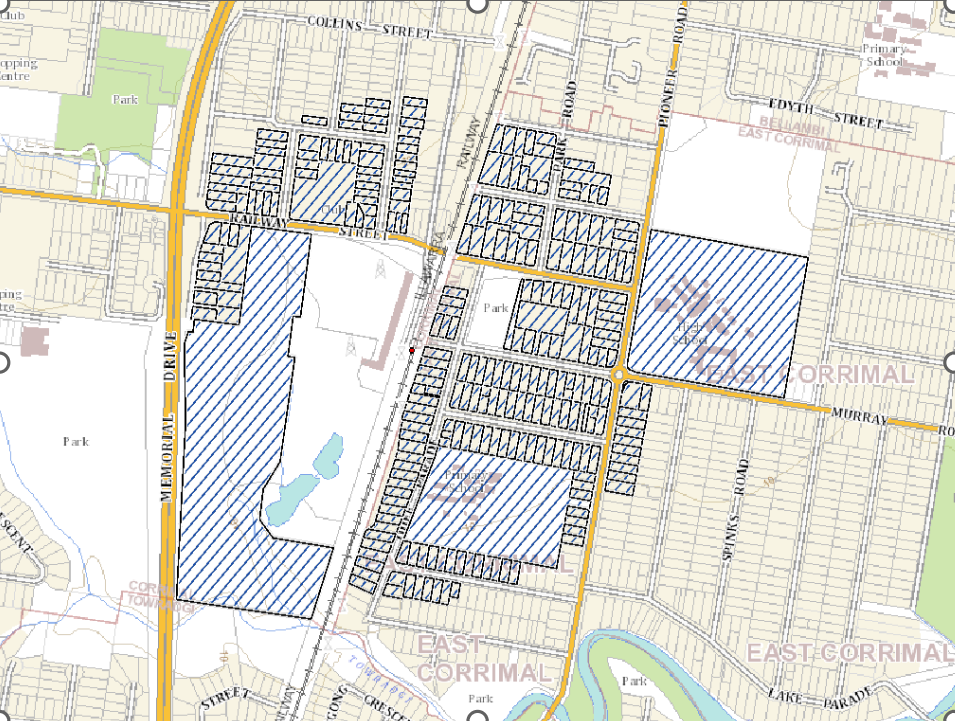As a Town Planning consultancy, our team keeps up to speed with the latest policies and regulations that shape the landscape of urban development. A recent change in NSW government policy is the commencement of the State Environmental Planning Policy (Housing) Amendment (Transport Oriented Development) 2024.
The first stage of the NSW Government’s Transport Oriented Development (TOD) planning reforms has been implemented through a new Chapter 5 Transport-oriented development being included in the State Environmental Planning Policy (SEPP) (Housing) - (the Housing SEPP).
The amended planning controls will apply within 400m of 37 train stations to deliver more new homes close to public transport. In the Illawarra-Shoalhaven, North Wollongong, Corrimal and Dapto stations have been identified as one of the train stations that benefit from the new planning controls.
This policy introduces significant changes aimed at promoting sustainable development and efficient transportation systems within the state.
Benefits of the Policy:
- Promotion of Sustainable Development: The policy encourages the development of Transport Oriented Development Areas, which are designed to reduce reliance on private vehicles and promote public transportation, cycling, and walking.
- Permissibility: Allowing residential flat buildings in residential zones and local centre zones, along with shop top housing in the local centre and commercial zones. It is important to note that this only applies to relevant employment and residential zones. In Wollongong Local Government Area this includes the following zones E1 Local Centre, E2 Commercial Centre, R1 General Residential, R2 Low Density Residential, R3 Medium Density Residential and R4 High Density Residential (including an equivalent land use zone).
- Height and Density Controls: The policy sets maximum building heights for residential apartments (22m for Residential Flat Buildings development and 24m for Shop Top Housing development) and floor space ratios (2.5:1). This helps in managing urban density and ensuring appropriate development density.
- Active Street Frontages: The policy emphasises the importance of active street frontages for residential flat buildings in specific zones. The controls aim to promote vibrant streetscapes and enhance pedestrian interaction, contributing to a lively urban environment.
- Parking: Affordable housing provided in the development is subject to parking rates specified in the SEPP.
- Affordable Housing: A 2% mandatory affordable housing contribution delivered onsite and in perpetuity for developments with a minimum Gross Floor Area of 2000m2. Affordable housing must be managed by a registered community housing provider. The percentage of the affordable housing contribution will be increased over time.
- Consideration of Design Guidelines: Development proposals must consider the Apartment Design Guide (ADG), ensuring that new residential apartments meet certain design standards for quality living spaces.
Pitfalls to consider:
- Minimum Lot Width: A minimum 21m lot width is required for residential flat buildings or shop-top housing in a TOD area, developers need to carefully navigate these requirements to ensure compliance with existing planning instruments.
- Heritage: No change to heritage clauses in local environmental plans. Applications relating to heritage items and heritage conservation areas will continue to be a consideration for the consent authority.
- Transitional Provisions: It is essential to be aware of the transitional provisions outlined in the policy, especially regarding the timing of development applications and modifications to existing consents.
- Compliance Challenges: Meeting the specific height, density, and design requirements outlined in the policy may pose challenges for developers, requiring careful planning and design considerations.
The TOD planning controls commenced 13 May 2024 and will initially apply to 18 station locations, with the remaining locations to have new planning controls over the next 3 – 18 months. Land to which the policy applies has been identified on maps adopted by the Housing SEPP and will be made available on the NSW Planning Portal Spatial Viewer. However, it should be noted that although the subject site may be mapped as subject to TOD planning controls, confirmation will need to be sought from a qualified town planner to ensure that the site can truly meet the requirements to attain any potential bonuses and the site is suitable for the type of development.
The State Environmental Planning Policy (Housing) Amendment (Transport Oriented Development) 2024 presents both opportunities and challenges for developers in New South Wales. By understanding the key provisions of the policy and engaging with experienced town planners and consultants, developers can navigate these changes effectively and contribute to the creation of sustainable, well-designed urban environments.
Stay informed, stay proactive, and embrace the opportunities for sustainable development that this policy brings to the table. Contact us today for more information.

